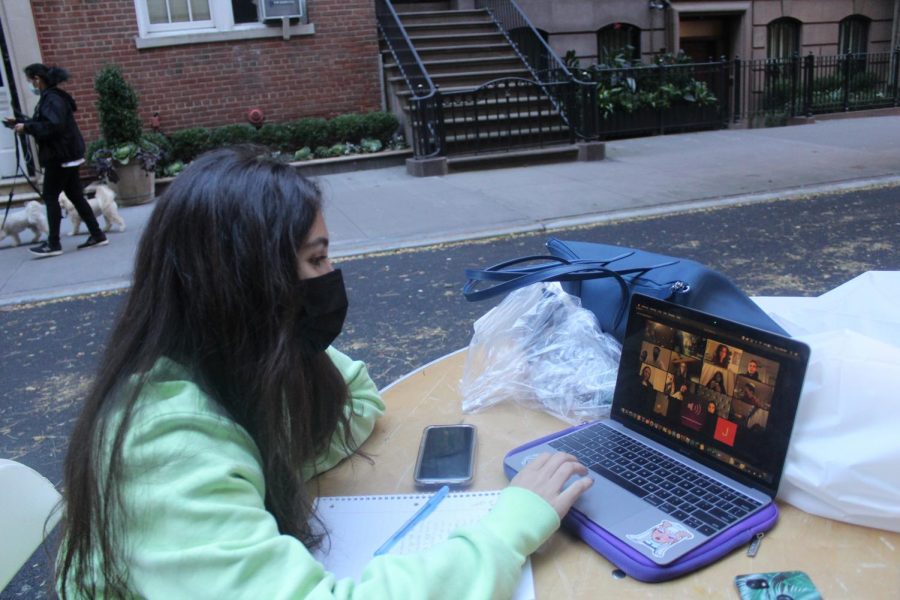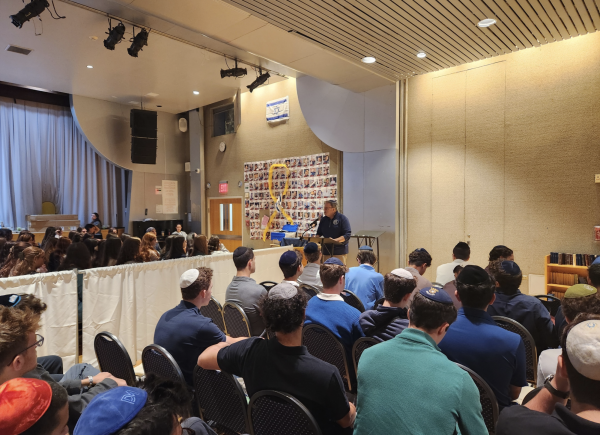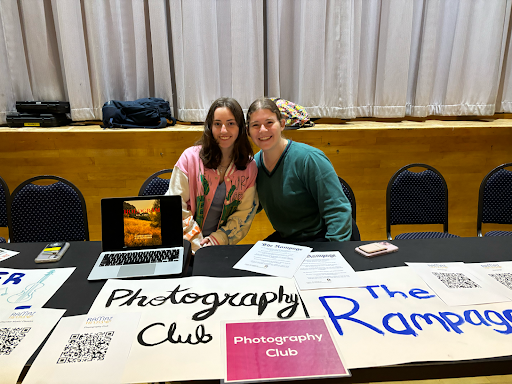Teachers on Zoom, Students in School
While the Ramaz hybrid system seems to be working during these uncertain times, some students and teachers still hesitate to return to in-person learning. Whether it is for their own health or the health of their families, around five high school teachers chose to teach exclusively online this semester.
According to Ms. Krupka, who is involved in the decision of which teachers can stay home without being furloughed, “I think a hybrid is actually a weirdly ideal model because Zoom and live teaching has its benefits and drawbacks.” She explained that Zoom has its benefits with easy technology, everyone attending the class in the same forum, and no masks. Showing slides and videos on Zoom are more productive since not everyone is spread out across a huge space. “I find it difficult to teach live, setting up a laptop for the [Zoom] learners and dividing my attention,” she said. However, Ms. Krupka believes that there are many problems with Zoom learning as well. Virtual learning “makes the pace and natural element of conversation a bit more stilted”. When students answer questions online, “someone has to lean forward and raise their virtual hand and unmute themselves.” Ms. Krupka also feels that on Zoom, students can also have a tougher time paying attention. She said, “It’s still so much better energy, communication, and focus in a live room.”
Ms. Litwack is teaching from home until a “safe, efficacious, and widely available” vaccine is available and “when the number [of Covid cases] decreases a considerable amount.” In past years, Ms. Litwack has set up the desks in her classroom in a circle. For her juniors, she used the Harkness method in Room 201, where the students ran the discussion while sitting in the circle, so conversation can flow easily. Obviously this year, she cannot arrange her students in a circle and the conversation can be much more choppy. “It’s much harder to energize students on a screen and for them to remain focused,” Ms. Litwack said. Conversely, she finds that one of the perks of Zoom that is that teachers can see all of their students’ faces when the students are learning from home.
Dr. Jucovy, who is also only teaching remotely, said that Ramaz has been “wonderful” regarding his need to teach online. He is even able to keep running his clubs and is giving his tests. Students are more engaged than ever in Mock Trial and Model Congress, and the club is able to go until later hours into the night than previous years. With virtual tests, Dr. Jucovy appreciates how there are no issues with bad handwriting, and he finds that students ask less questions with online tests. Though his 1-2 hour commute from Great Neck is eliminated now, he genuinely misses being in the building and in his office. Dr. Jucovy’s days and weeks are much more productive than before. In the past, he would occasionally wing his lessons when work and grading would pile up. Now on Zoom, each lesson must be prepared in advance so he is “forced to work harder.” Dr. Jucovy said, “[Remote teaching] is just as rewarding, but in a different way. You have to know how to make the most out of every situation.”
As an in-person teacher, Ms. Kavian much prefers being live, but finds benefits to both options. She said, “The masks really prevent me from hearing students, especially when I have an earpiece on from the remote learners. However, online I can read students’ facial expressions better to gauge when the class does or does not understand a concept.” At the same time, she believes that students need to be in school at least part of the time. Ms. Kavian feels students benefit from working together in the physical classroom. “At home, we are in PJs and the boundaries of school and home are blurred,” she commented.
Students are finding it difficult to learn in school when their teachers are online. Rachel Abelson ’24 said, “It’s hard to focus especially if there is no other in-person teacher watching us in the classroom to make sure everyone is focused.” Michal Seinfeld ’21 also feels like she is unable to concentrate when her teachers are on Zoom and she is in school. Seinfeld said, “Although I do understand my teachers’ health concerns, I think it is really difficult to learn in school when my teacher is online. The classroom is loud, there is constant feedback from all the computers playing the teacher’s voice at the same time, and it is incredibly distracting.” As a junior, Ben Yazdi ’22 is concerned about his future applications for college and his grades. He feels that “qualitatively and quantitatively speaking, learning is much better in person. Teacher-to-student communication is easier, which is important to us as learners.” Regarding Zoom classes on live days, he has “awful” experiences with them. “They are far worse than learning at home online. Not only is there that same lag that you always get from being on Zoom, but it’s also like when you have 20 of your family members in the same room all at once,” Yazdi said. He speaks for most students regarding the chaos that occurs when teachers are online.
At the same time, other students feel they are able to learn more when their teachers are online exclusively. One sophomore said, “I actually think it is better when my teacher is only teaching remotely. When we are at home, it is nice to hear and see her teach without a mask because if she were in the building, she would be wearing one. And, when I am in school, I can move around sit in different areas of the building or even outside during class.”
The school has been understanding and accommodating regarding health conditions and high-risk categories, which include many Ramaz educators. Students and teachers alike have learned how to connect in a new way and have found a new appreciation for in-person school.



